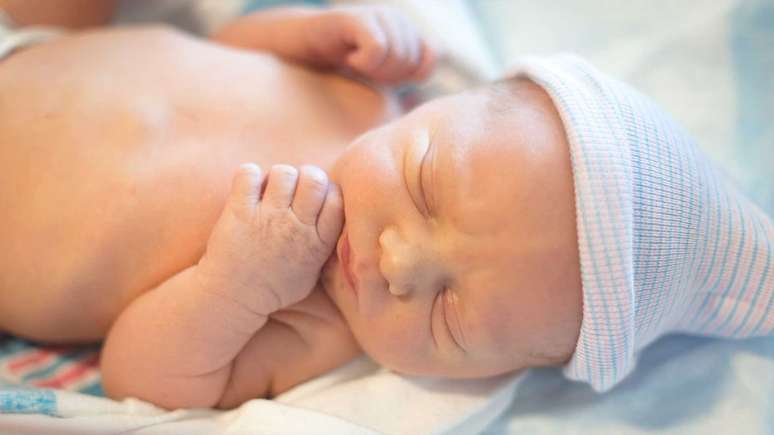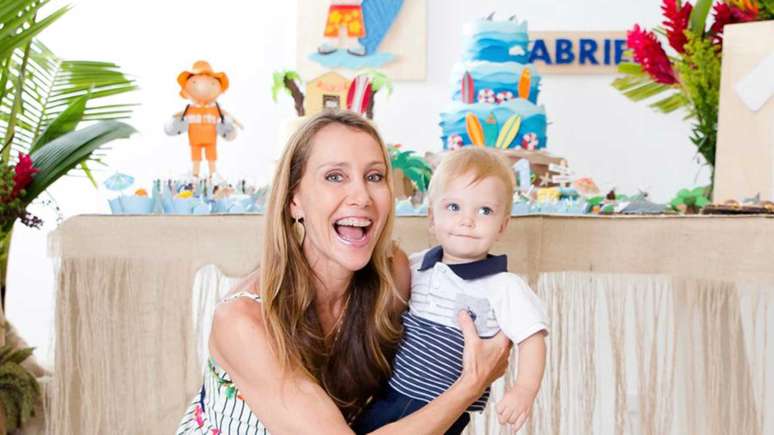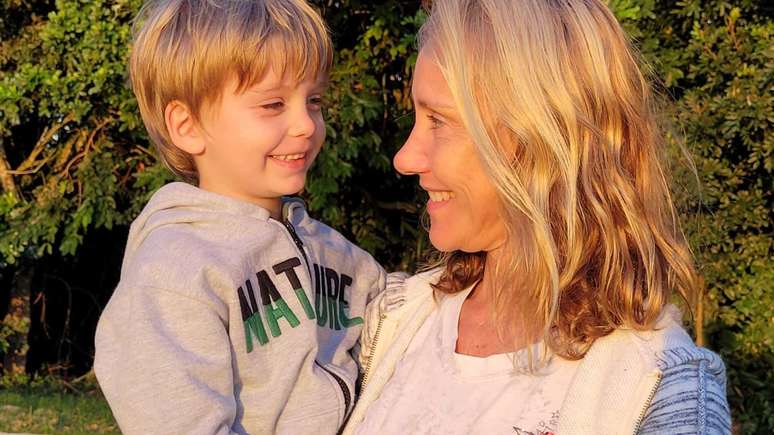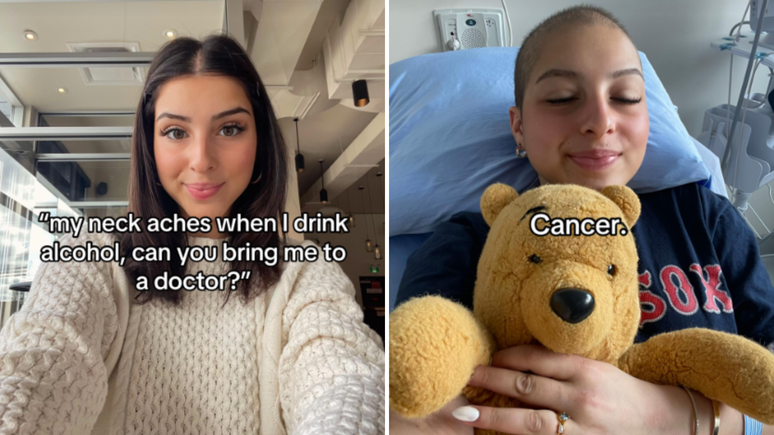Tatiana Goellner struggled with infertility and faced unimaginable challenges to fulfill her dream of carrying a baby in her arms
For some people, the plan to have children is a long way off, hence the scare when symptoms appear and the pregnancy test is positive. Instead, there are those who say they would do anything to see those two red dashes that confirm pregnancy. Being a mother isn’t always easy and, to tell the truth, it’s been an increasingly difficult path. Women have been putting off motherhood for a variety of reasons, including career priority, financial stability and finding an ideal partner, when the desire is not an independent production. And this is also related to the increase in research into assisted reproduction methods to conceive a child.
html[data-range=”xlarge”] figure image img.img-80d5dfa3b7eb1688e4fe482da56b1027ykxr4r8r { width: 774px; height: 435px; }HTML[data-range=”large”] figure image img.img-80d5dfa3b7eb1688e4fe482da56b1027ykxr4r8r { width: 548px; height: 308px; }HTML[data-range=”small”] figure figure img.img-80d5dfa3b7eb1688e4fe482da56b1027ykxr4r8r, html[data-range=”medium”] figure image img.img-80d5dfa3b7eb1688e4fe482da56b1027ykxr4r8r { width: 564px; height: 317px; }
In April this year, the World Health Organization (WHO) released a report in which it pointed out that 17.5% of the world’s adult population, or 1 in 6 individuals, suffers from infertility throughout their lives. “The large proportion of those affected show the need to expand access to fertility care and ensure that this issue is not overlooked in health research and policy so that those who want it have safe, effective and affordable ways to to have children,” Tedros said. Adhanom Ghebreyesus, director general of the organization.
Tatiana Goellner of Rio Grande do Sul is part of this group. To realize the dream of having his son, Gabriel, who is now 5 years old, has faced a long journey. Really long! Past 30 cycles of in vitro fertilization (IVF)some of them with donated eggs, all without success. She tried surrogacy in India and then in the United States, where, finally, the story had the desired ending.
Becoming a mother was not always Tatiana’s dream. According to her, the instinct also emerged after the wedding. When attempts to conceive naturally failed, she sought help from specialists to figure out what the problem was.
“”
“When I was 42, they said my eggs were old. I said, ‘Now, that’s fine. But how about 38?'”
Overall, since the age of 38, she has consulted in five different clinics. Her tests rattled her, as did her partner, but doctors were unable to determine the cause of her infertility.
Many rounds and endless hope
Tatiana had her first IVF cycle at the age of 39, the first step on a long journey. After that another 24 rounds would come. “I’ve had 25 attempts with my eggs”, accounts. The chemical engineer became pregnant, but the pregnancy did not continue. “There came a point where I lost. At 41 they found out I had thrombophilia,” she explains.
Although the doctors insisted that the problem was the aging of the eggs, she was sure that wasn’t the problem. “When they suggested that I use donated oocytes, I accepted, just to refute and remove that doubt”, she says, remembering that history has always repeated itself: nausea set in and, after a week, Tatiana felt that it was time for bewilderment came up. “Every time the back pain started, I cried, because I knew what was going to happen,” she says. No sooner said than done.
Alongside the frustration of not being able to fulfill her dream, there was physical, emotional and financial strain. “I spent all the money and reserves I had. This also ends up wearing down the marriage, because the money is lacking”, says the engineer, who despite this does not regret the attempts he has made.
traveling embryos
One day, while watching a TV programme, she learned of the possibility of surrogacy in India, a country which at the time allowed the procedure, and she was thrilled. “She was a third the price of other places in the world and I’ve seen the woman stay in a house with a nutritionist, with a doctor, with everything she does. She just does it during that time,” she says. She so she thought, “Why not?”
Tatiana sent her embryos to India, through a company specialized in transport solutions for this type of biological material, a procedure authorized by the National Health Surveillance Agency (Anvisa). “They carry out this transport in a specific cylinder for cryogenics, with liquid nitrogen,” she explains. However, there is a lot of bureaucracy, especially in getting approval from the regulatory agency.
With the help of the clinic involved in the fertilization process, after a year and a half, the embryos were sent to India. However, she received a call that threw her off axis. The cylinders had suffered an accident. “We don’t know for sure what happened, but it probably fell, some of the material escaped…”, she comments. Transportation would no longer be possible.
Surrendering, however, was not an option! Tatiana hired another courier and managed to get the embryos intact to India. According to the responsible company, the next step would be to choose the woman who would act as a surrogate. Two months passed and then the suspicion arose that something was wrong. Through the internet, the engineer discovered that the surrogacy procedure had been prohibited for foreigners.
In Brazil, it is worth mentioning that the practice of surrogacy is not allowed. On the other hand, it is possible to do what has become known as a supportive belly, i.e. a woman can give up her uterus, as long as it’s not in exchange for money (unless the amounts are related to pregnancy-related costs). “At the time, I didn’t think of doing it here, because I don’t have any cousins or younger sisters who could give birth for me,” says Tatiana.
Although there is no specific legislation addressing surrogate pregnancy or temporary uterus transfer, which are the more technical names of what we know as a solidarity belly, the practice of human reproduction is regulated by resolutions of the Federal Council of Medicine. Previously, at a time when Tatiana was looking for a belly out, the trial was allowed only between women who had a degree of kinship. According to the latest update, which took effect in 2022, this has changed.
After the veto in India, Tatiana did not give up and decided that she would send the embryos to the United States. You would start a new phase (and all the bureaucracy again), with the request for authorization from the Food and Drugs Administration (FDA). Then, the airline specializing in cryopreservation transport flew the embryos to the United States.
At this stage, the engineer should exchange letters with the surrogacy candidates. Tatiana was delighted with the first correspondence she received, from a young woman named Amanda. She went to the United States to meet her and was thrilled. The idea was to implant one of the embryos first, and if that didn’t work, the clinic would try to implant the other two, in a possible twin pregnancy.. Amanda agreed.
The dreamed positive test
The implantation process took place on April 7, 2017, and less than a week later, in a video call, Amanda revealed the positive test to Tatiana. “I couldn’t be happy at the time. That only happened when she did the transvaginal ultrasound and it showed she was all right,” she recalls. When the pregnancy was over six months, the Brazilian again went to the United States.

At 39 weeks I knew an induction would need to be done and the baby would be born. “I didn’t even have a purse. I only installed the car seat in the car,” she recalls. But the dream came true! Gabriel was born healthy and went straight into his mother’s arms.
Tatiana tried breastfeeding, lactation-inducing drugs and a feeding tube, but after a week it didn’t work. “The nurse told me that, after everything I’d been through, I shouldn’t worry, she was fine,” she says.
“”
“I understood what true love is only after having a child. There is no greater love in the world”
Gabriel is very similar to his mother. She guarantees that she has no secrets from her son, that she is very resolute and that she has already told the little one how he was conceived: “I also showed pictures of Amanda. You know, I just don’t know how much you understand.”

Tatiana still has three frozen embryos. “I ended up separating and, now, alone, I don’t know if I’ll have more children. I don’t think so,” she says. In the face of everything she’s been through, she recommends that women address the issue of motherhood first. “I never wanted to have kids until I was older. So if I could give you one piece of advice, it would be that however much you want to put it off [a gravidez], save the eggs if possible so you don’t go through that stress. There are many ways. A mother’s love has no limitscomplete.
Source: Terra
Ben Stock is a lifestyle journalist and author at Gossipify. He writes about topics such as health, wellness, travel, food and home decor. He provides practical advice and inspiration to improve well-being, keeps readers up to date with latest lifestyle news and trends, known for his engaging writing style, in-depth analysis and unique perspectives.









